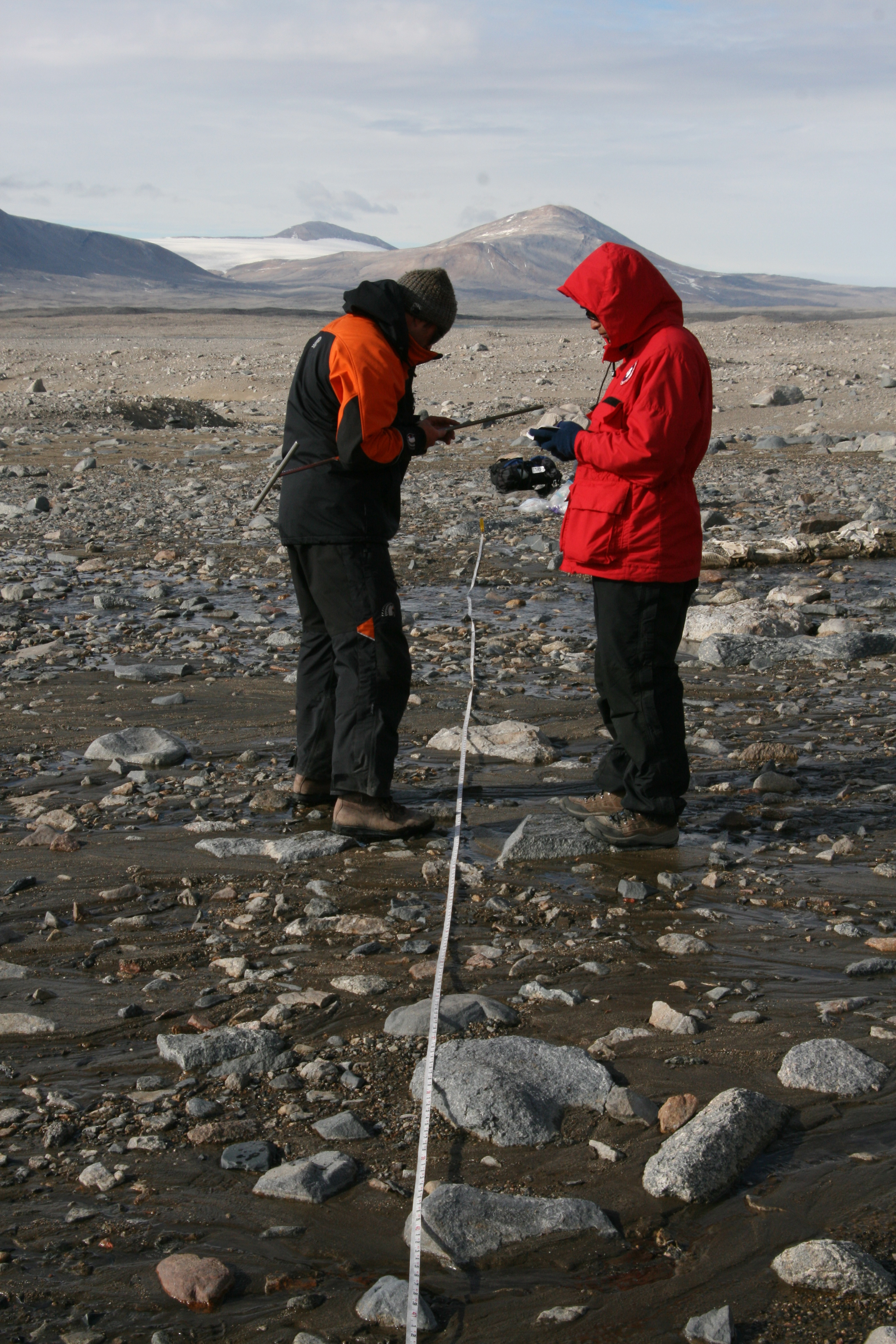 University of Waikato graduate student
Nicholas Demetras (on the left), and Bishwo Adhikari, a graduate student at
Brigham Young University (BYU), collaborate on a soil transect experiment as
part of the McMurdo Dry Valleys Long Term Ecological Research (LTER) project.
LTER is funded by the National Science Foundation (NSF). Following their study,
the LTER researchers published a report in which they described a nematode worm
they found that could withstand its cold Antarctic climate by creating a sort
of antifreeze.
University of Waikato graduate student
Nicholas Demetras (on the left), and Bishwo Adhikari, a graduate student at
Brigham Young University (BYU), collaborate on a soil transect experiment as
part of the McMurdo Dry Valleys Long Term Ecological Research (LTER) project.
LTER is funded by the National Science Foundation (NSF). Following their study,
the LTER researchers published a report in which they described a nematode worm
they found that could withstand its cold Antarctic climate by creating a sort
of antifreeze.
Diana Wall, director, School of Global
Environmental Sustainability, Colorado State University (CSU) (left); Claire
Ojima, an undergraduate student at CSU; and Byron Adams, an associate professor
at Brigham Young University, maintain "worm farms" near Lake Hoare,
Taylor Valley, Antarctica--a field stie of the McMurdo Dry Valleys Long Term
Ecological Research (LTER) project. LTER is funded by the National Science
Foundation (NSF). The opaque chambers are part of a long-term soil warming
experiment. Adams is lifting the lid on a box that houses a data logger that
stores meteorological and soil temperature data. Following their study, the
LTER researchers published a report in which they described a nematode worm
they found that could withstand its cold Antarctic climate by creating a sort
of antifreeze.
When water inside a living thing
freezes, ice crystals pierce cell membranes and kill them (which causes
frostbite). But the nematode creates a protein that probably prevents the ice
from forming sharp crystals or coats them so they don't puncture anything.
Identifying the genes the worm uses to kick in its antifreeze system could have
potential in future research such as engineering frost-resistant crops.
 The researchers also reported that when
its environment runs dry, the nematode dries itself out and goes into suspended
animation until liquid water brings it back to life. Adams says this unique
genetic response to its environment indicates the nematode will likely flourish
as Antarctica gets wetter due to climate change, while other nematode species
diminish.
The researchers also reported that when
its environment runs dry, the nematode dries itself out and goes into suspended
animation until liquid water brings it back to life. Adams says this unique
genetic response to its environment indicates the nematode will likely flourish
as Antarctica gets wetter due to climate change, while other nematode species
diminish.
The samples collected and data generated
for this research were done under the auspices of the McMurdo Dry Valleys LTER
project (under NSF grant OPP 98-10219) and administered under NSF's Office of
Polar Programs. Adhikari received funding from NSF and Demetras received
funding from New Zealand and NSF.
To read more about this study, see the
BYU news release BYU study: How an Antarctic worm makes antifreeze and what
that has to do with climate change.
(Date of Image: 2009)
Credit: Judit Hersko, California State
University San Marcos







No comments:
Post a Comment